Are hydrogen fuel cell vehicles the future of autos?
California is the only state that currently sells FCEVs.

What if your electric vehicle could be refueled in less than 5 minutes? No plug, no outlet required. The range anxiety that's stymied sales of EVs? Forget about it.
Three EVs can meet these demands and allay concerns about owning an emissions-free vehicle.
There's just one drawback. You can only find them in California.
Welcome to the world of hydrogen fuel cell electric vehicles (FCEVs). A tiny market that includes Toyota's Mirai, Hyundai's Nexo and Honda Motor's Clarity Fuel Cell, these "plug-less" EVs are the alternative to their battery electric cousins. Drivers can refuel FCEVs at a traditional gasoline station in less than 5 minutes. The 2021 Mirai gets an EPA estimated 402 miles of range on the XLE trim with the Nexo close behind at 380 miles. Neither cold weather nor heated seats deplete the range, another added bonus.
"Hydrogen fuel cell vehicles are superior driving machines compared to traditional vehicles," Jackie Birdsall, senior engineer on Toyota's fuel cell team, told ABC News.
Toyota sees tremendous upside in fuel cell technology, which it has been perfecting for 25 years. More than 6,500 Mirais have been sold or leased in California since its launch in 2015. The second generation Mirai, on sale next month in San Francisco and Los Angeles, can store more hydrogen than its predecessor, giving the sleek sedan a 30% increase in range.
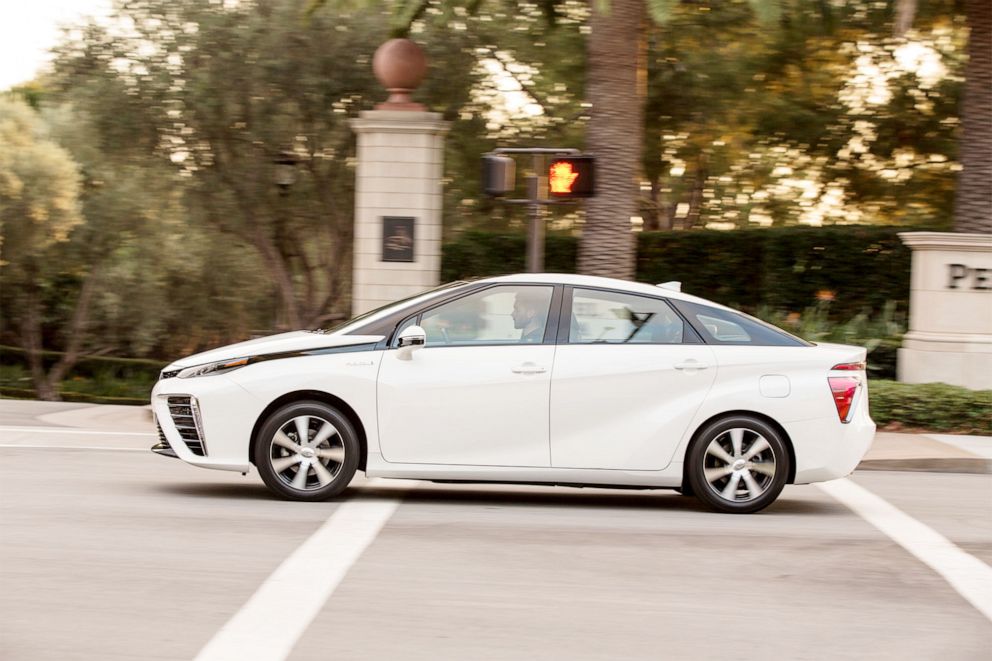
"When people hear electric they only think battery electric," Birdsall said. "The BEV [battery electric vehicle] market is pretty saturated. If we want to have sustainability and longevity we need to be diverse."
'A lot of progress'
FCEVs work like this: Electricity is generated from an onboard supply of hydrogen. That electricity powers the electric motor. When hydrogen gas is converted into electricity, water and heat are released. An FCEV stores the hydrogen in high-pressure tanks (the Mirai, for example, has three). Non-toxic, compressed hydrogen gas flows into the tank when refueling.
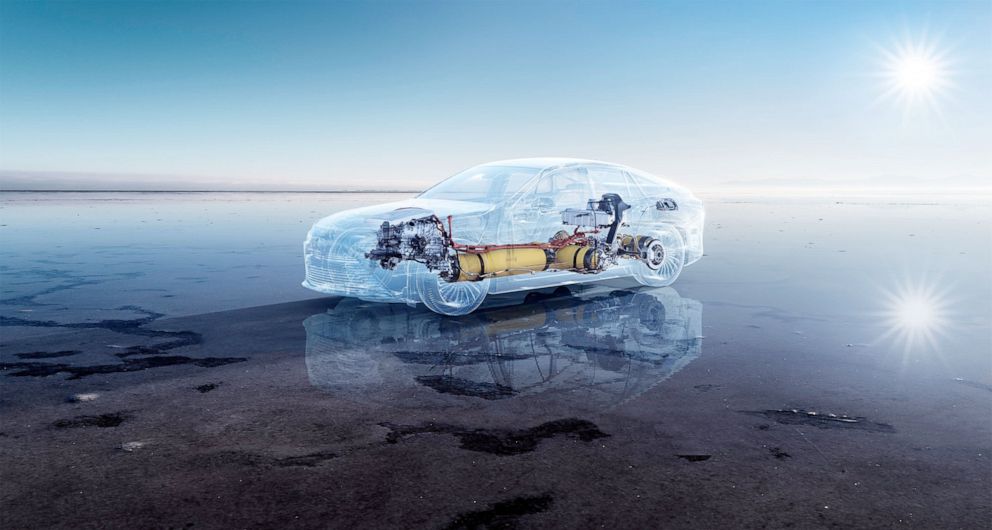
"If we can build the stations, we can sell the cars," Keith Malone of the California Fuel Cell Partnership, an industry-government collaboration founded in 1999 to expand the domestic FCEV market, told ABC News. "These vehicles have met all the same safety standards globally. The tanks have undergone armor piercing bullet tests. There are no dangers."
Malone, a longtime advocate of hydrogen-powered vehicles, did concede that the nascent industry has more hurdles to clear before it's widely accepted.
"We are an early market and these cars are not cheap for lease or sale," he said. "Most stations are concentrated in urban areas in California. But we've seen a lot of progress. The real challenge is rolling out the fueling network. But the vehicles are here. They're good, people love them."
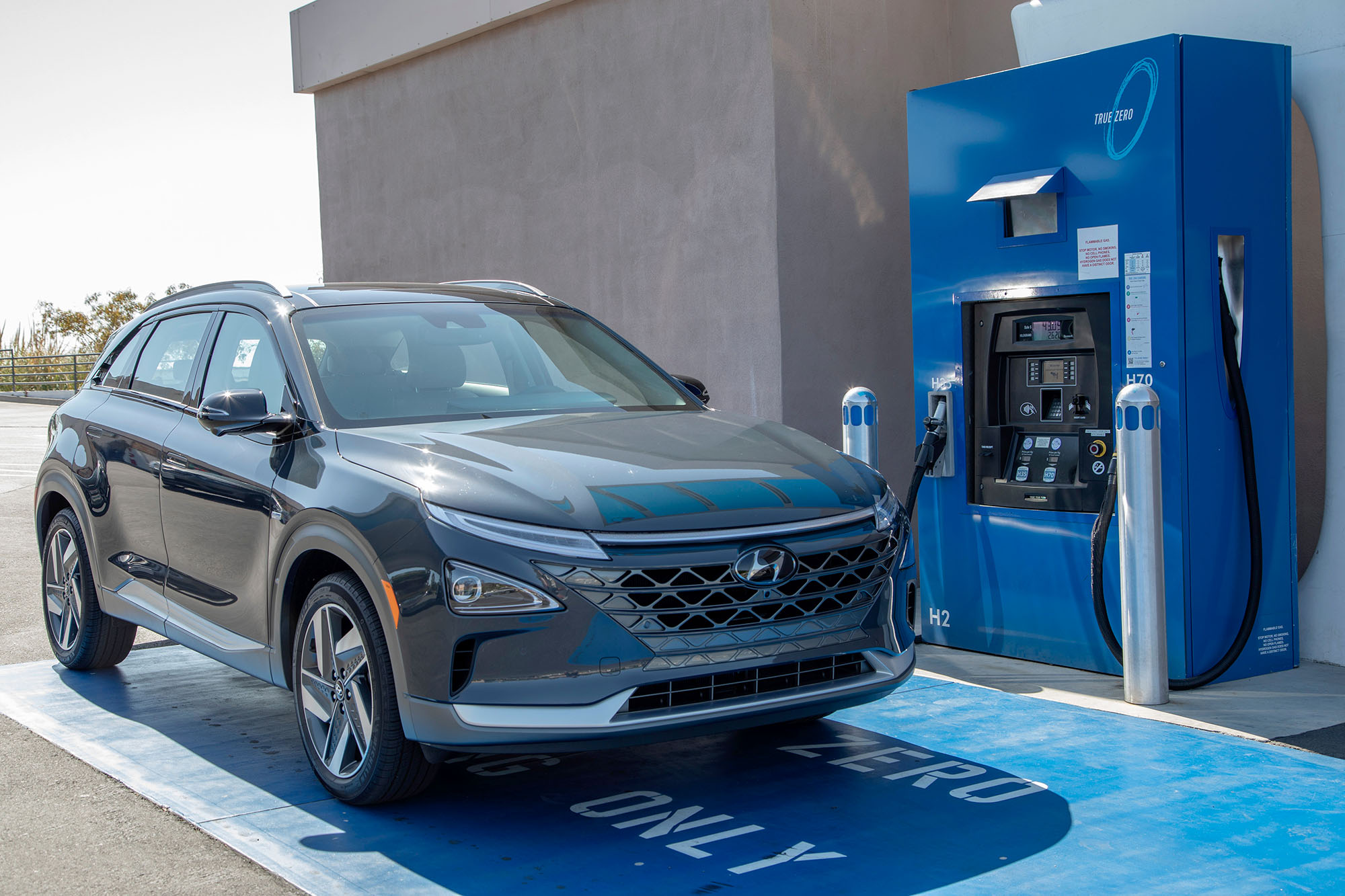
J.R. DeShazo, director of the Luskin Center for Innovation at UCLA, remembers when Arnold Schwarzenegger, the former governor, vowed to revamp California's highways as "Hydrogen Highways" in 2004. The infrastructure to support hydrogen fuel for transportation never materialized. DeShazo doubts it ever will.
"If there were stations everywhere, hydrogen would be an obvious solution," he told ABC News. "Refueling stations are really expensive and require significant economies of scale to be cost effective and compete with gasoline and electricity."
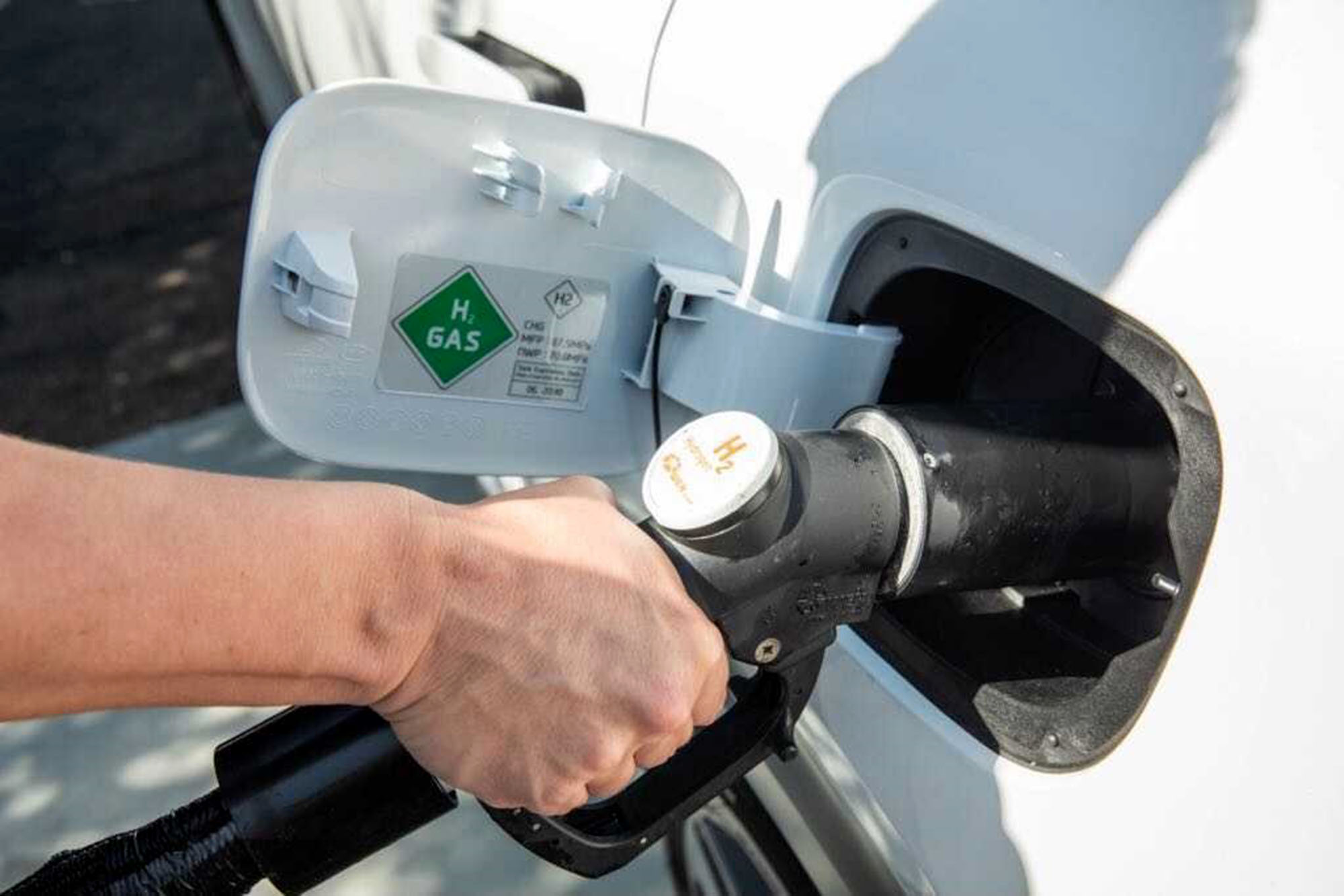
Betting on batteries
There are currently 42 hydrogen fueling stations in California though not all are online. The average price of hydrogen is $16 a kilogram versus $3.18 for a gallon of gasoline in the state. At least 8,890 FCEVs are on the road today, a far cry from the 53,000 the California Fuel Cell Partnership projected by the end of 2017.
"I don't see a lot of automaker interest in hydrogen," DeShazo argued. "Most automakers are betting on battery electric vehicles for the passenger market and delivery trucks."
John Voelcker, the former editor of Green Car Reports who now covers electric cars and energy policy as a reporter and analyst, may be one of the industry's most outspoken detractors. In a recent article for The Drive, he laid out the case for why FCEVs have not delivered on their many promises.
"Despite more than half a century of development, starting in 1966 with GM's Electrovan, hydrogen fuel-cell cars remain low in volume, expensive to produce, and restricted to sales in the few countries or regions that have built hydrogen fueling stations," he wrote.
When asked if hydrogen was the future of the automotive industry, Voelcker was unequivocal: "Absolutely not," he told ABC News.
"If China suddenly decided its auto industry will adopt hydrogen vehicles, things might change," he went on. "I am not a believer of FCEVs. It costs tens of billions of dollars to set up a hydrogen fueling network that has industrial strength compression equipment" to fuel these vehicles, he said.
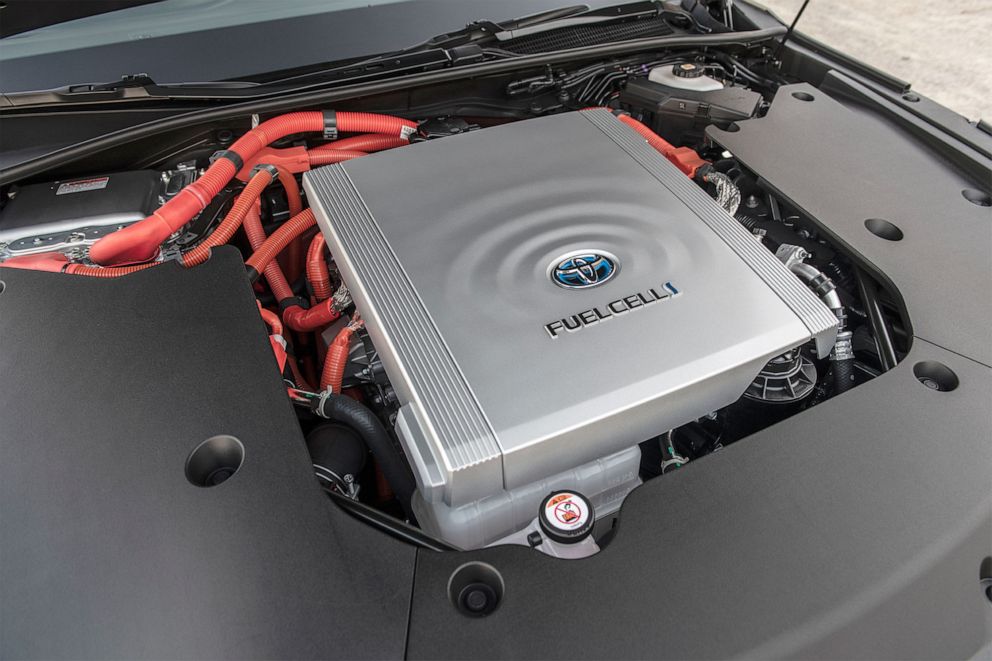
Both Voelcker and DeShazo pointed out that the production of hydrogen -- if not made from renewable energy such as natural gas or solar -- causes greenhouse emissions.
"If the goal is reducing climate change gas per mile driven, electricity is simply better at doing that," Voelcker said. "More CO2 is associated with hydrogen cars."
Mixed outlook for automakers
Not all automakers are convinced that hydrogen can help them meet their emissions targets. Audi will stop development of its hydrogen-powered vehicles, including its flashy h-tron concept that was expected to hit the market in 2025, according to German newspaper Die Zeit.
"We will not be able to produce sufficient quantities of the hydrogen required for propulsion in the next few decades in a CO2-neutral manner. I therefore do not believe in hydrogen for use in cars," Markus Duesmann, Audi's CEO, said in an interview.
Volkswagen has also decided against the technology, with Herbert Dies, the company's chief, telling industry insiders in July: "It doesn't make a lot of sense at this point to think about bringing hydrogen into passenger cars."
Unlike its German counterparts, BMW has not ruled out hydrogen. The Bavarian automaker said in a tweet that it would produce an X5 SUV with its second generation hydrogen fuel cell powertrain by 2022. General Motors, along with partner Honda, said it remains "committed to fuel cells as a complement to battery-electric propulsion" and the manufacture of fuel cells will take place at the company's facility in Brownstown, Michigan. GM will also supply its Hydrotech fuel cell systems to electric start-up Nikola's heavy duty semi-trucks.
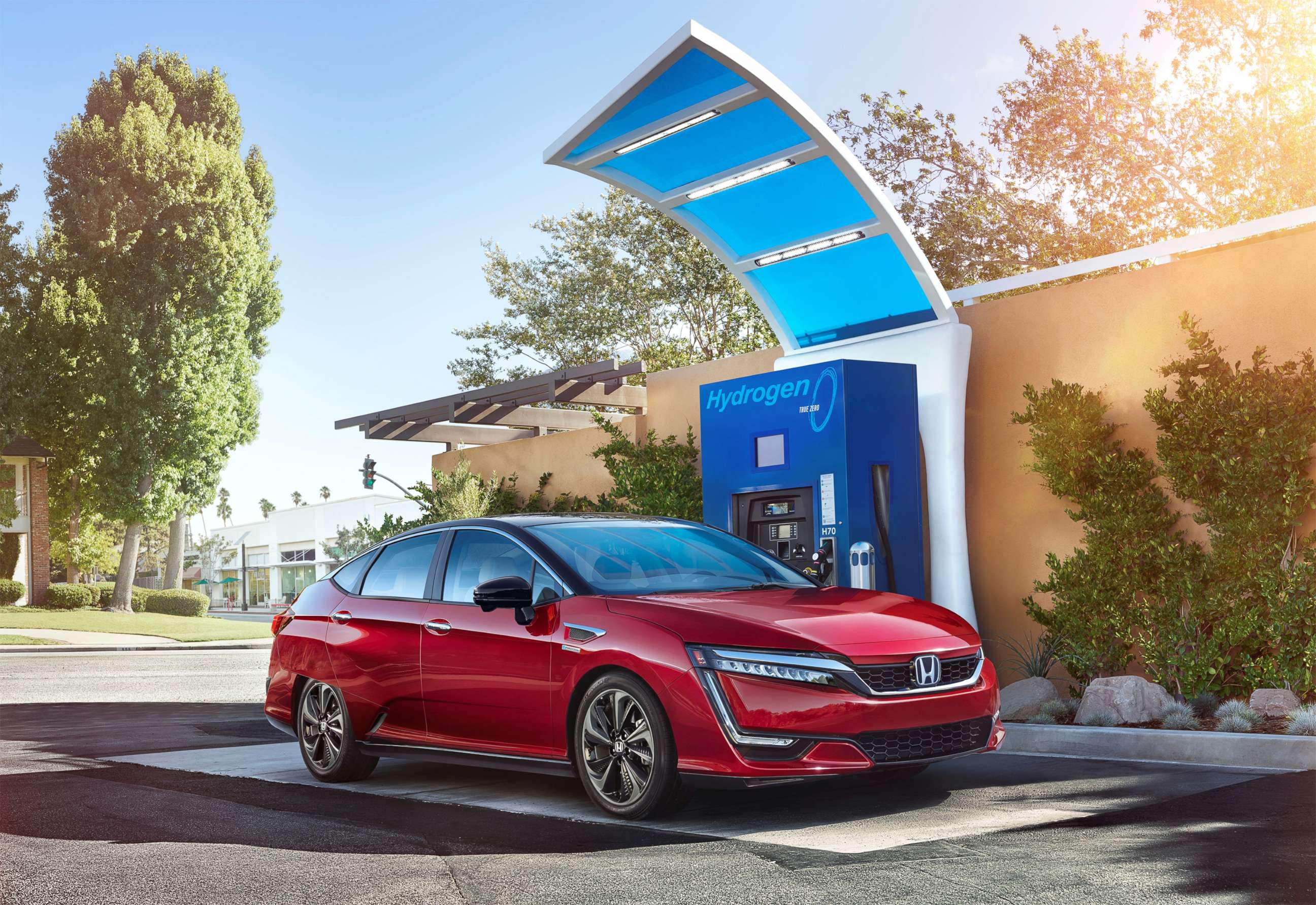
Whether hydrogen can succeed depends on how willing the stakeholders -- automakers, station developers and local governments -- are willing to invest in the technology. Honda has only sold 1,617 Clarity Fuel Cell vehicles in nearly four years and the company is "pursuing multiple ZEV (Zero Emission Vehicle) pathways" in an effort to reduce CO2 emissions, a spokesperson said. Toyota is actively working with elected officials, NGOs, utilities and energy companies to increase the access to hydrogen. A number of refueling stations have been built or are almost complete in the Northeast with Colorado, Oregon, Washington state and Texas eyed as the next growth areas.
Toyota engineer Birdsall said 2021 Mirai owners will receive $15,000 in free hydrogen, or enough money to cover the first 67,000 miles. It costs about $90 to fill up the car's 5.6 kilogram tank. These giveaways could help change consumers' minds -- at least in California -- to try an FCEV. Hydrogen's limitations, however, may be too much for any automaker to overcome in the long term.
"We don't want to put all our eggs in one basket," Birdsall noted. "Both BEVs and hydrogen fuel cells are the future."




